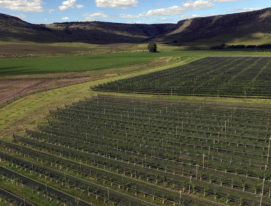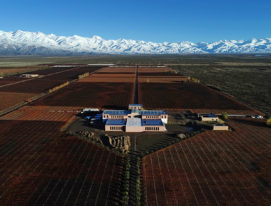Several countries across the world are famous for their aromatic white wines. In places such as Greece, Hungary and Slovenia, discerning consumers scour the shelves in search of the distinctive aromas that drive them crazy. In addition to boasting memorable names like Assyrtiko, Frumint and Rumeni Muskat, each grape has its own unique perfume. And although it’s not so well-known, they’re not so very different from Torrontés.
All four of the grapes mentioned are heritage wines: autochthonous varieties developed and perfected in a single country. Whereas a grape like Chardonnay produces cosmopolitan wines, the heritage varieties in these different corners of the world are more specialized but all the more intriguing for it. They just need to be presented in the right way.
That’s why Argentina has organized Torrontés Appreciation Week, which will take place this year between 4 and 11 of October. All week, the aromatic grape will be celebrated in wine shops and homes, but before we can celebrate properly, it’s important to know a little more about it.
The ABC of Torrontés
Among the heritage varieties of Argentina – studies are ongoing on but thus far about twenty have been identified – Torrontés Riojano is by far the most widely grown (7300 ha under vine). According to an analysis of its DNA, it’s a cross between Moscatel de Alejandría and Listán Prieto, which some historians (such as Pablo Lacoste) place in Mendoza in the middle of the 18th century.
In spite of its Mendozan origins, the grape found its true home to the north, mainly in the valleys of Rioja and Salta. Because it takes a long time to develop, it requires the whole northern summer to ripen properly while the blazing sun is an added plus in terms of concentration although to prevent it from damaging the grapes, Torrontés vines are generally grown under a pergola.
In the criss-cross shade of the structure, the grapes acquire greater complexity, helped by the cooler evenings of the desert valleys. Francisco Tellechea, an agricultural engineer at El Esteco, explains: ‘Getting the right amount of shade is the secret to balancing the aromas of Torrontés. Too much sun and the skin will get damaged, too little and it’ll be too herbal. At the winery we’ve fine-tuning the process to allow just the right amount of filtered sunlight onto the bunches.’
But it’s not all about shade. ‘If the soils are rich in clay, ripening tends to take longer and the wine preserves its volume and acidity. If they’re sandier it ripens faster and achieves good aromatic expression,’ says Thibaut Delmotte, the oenologist at Colomé.
Sensitive to altitude, Torrontés appears to feel most at home between 1500 and 1900 metres above sea level in places such as Chilecito and Cafayate. Higher up, in Cachi for instance, at 2300 masl, its style changes markedly, similarly to examples found in the south of Mendoza. José Lovaglio makes it in Paraje Altamira, Mendoza: ‘Here the harvest window is longer, allowing us to achieve different aromas.’
So, the combination of altitude, latitude, soils and planting systems all play a part in the fascinating range of flavours offered by Torrontés.
Diverse styles
Just like the different styles available of European heritage varieties, to properly celebrate Torrontés you need to try the full spectrum of versions, which range from dry and still to foamy and sweet. However, it works best as an aromatic, dry still white or a dessert wine.
Among the dry, aromatic versions, the Torrontés from Cafayate and Chilecito are the most expressive. The nose varies between citrus and floral flavours such as orange blossom and rose, while the palate tends to be medium-bodied and smooth with mild freshness. These are the characteristics of Domingo Hermanos 2019, Don David 2019, Collovatti 2019 and Laborum de Parcela 2019. The style goes very well with punchy Salteño empanadas, which often contain potatoes and spring onion, or with a tray of nibbles.
However, several winemakers are looking to produce a less floral, more citrussy style in which the orange blossom is joined by herbs, basil and lime. This profile results in a Torrontés with more volume, fat and tension; a more gastronomic incarnation. Good examples are El Esteco Old Vines 2019, Colomé 2019, Adentro 2019, Abras 2019 and Terrazas de los Andes 2019, as well as Susana Balbo Barrel Fermented 2019. It’s an ideal accompaniment to Asian dishes or seafood.
When made as a dessert wine, however, similarly to the Hungarian Furmint, Torrontés takes on a sexy character with ripe citrus fruit and a hint of damson. Because it develops good sugar concentration, the result is an indulgent wine that, when done well, offers a rich, fresh profile. A good example is El Esteco Late Harvest 2018, which is an ideal accompaniment to strong cheeses.
To sum up: anyone looking for aromatic heritage whites should know that Argentina has an expressive, complex gem to offer and that the week running from 4 to 11 of October is an excellent time to discover it.



